Lock 28
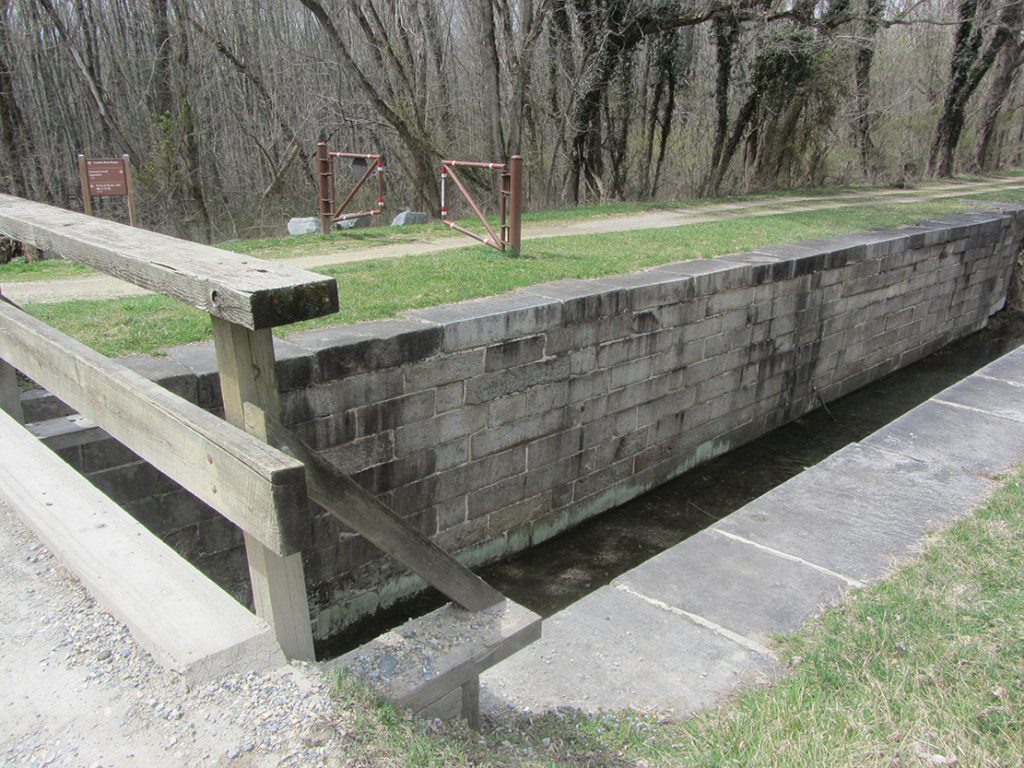
This point of the Canal is where John Mosby’s confederate raiders crossed the river on July 4, 1864 en route to their Calico Raid at Point of Rocks. It is […]
Lockhouse 24 “Rileys”
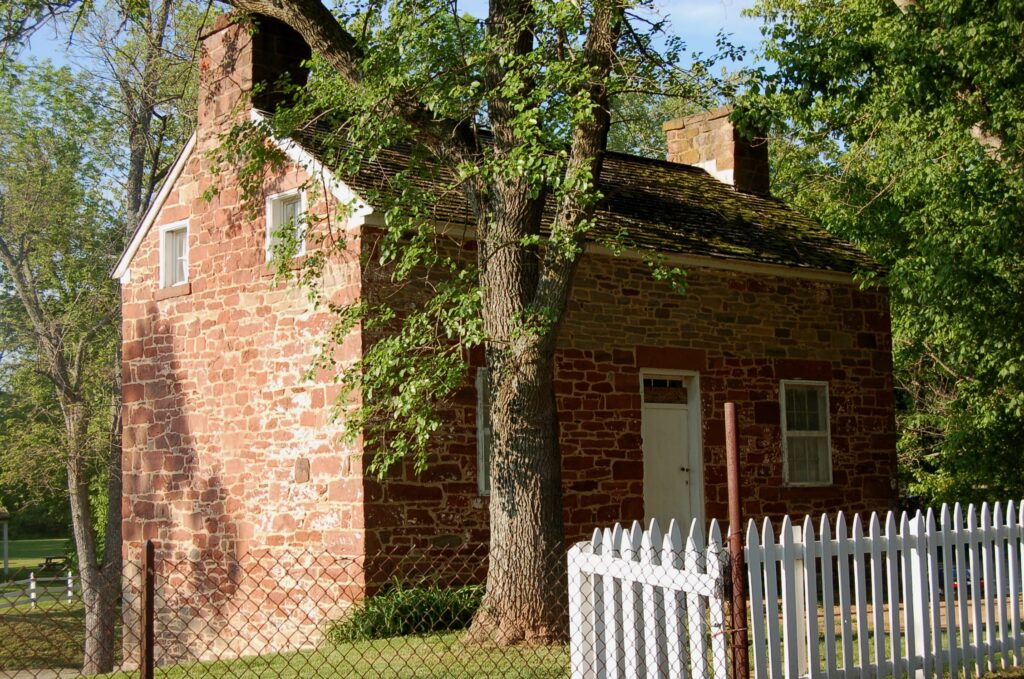
Dating to the 1830s, Rileys Lockhouse is built with the same red sandstone as the nearby aqueduct.
Seneca Schoolhouse
Experience a typical 1880 school day in Seneca, Maryland! In 1865, Mr. Darby started collecting subscriptions from neighbors in the form of cash and skills to build and run a […]
Poolesville Old Town Bank Museum
The Poolesville Old Town Bank Museum is housed in the former Town Hall and National Bank and has been restored to its former appearance. A Civil War exhibit takes you […]
John Poole House
Built by John Poole Jr. in 1793, the John Poole House is the oldest building in Poolesville. The building served as a trading post for traveling merchants and local families. […]
Lockhouse 33
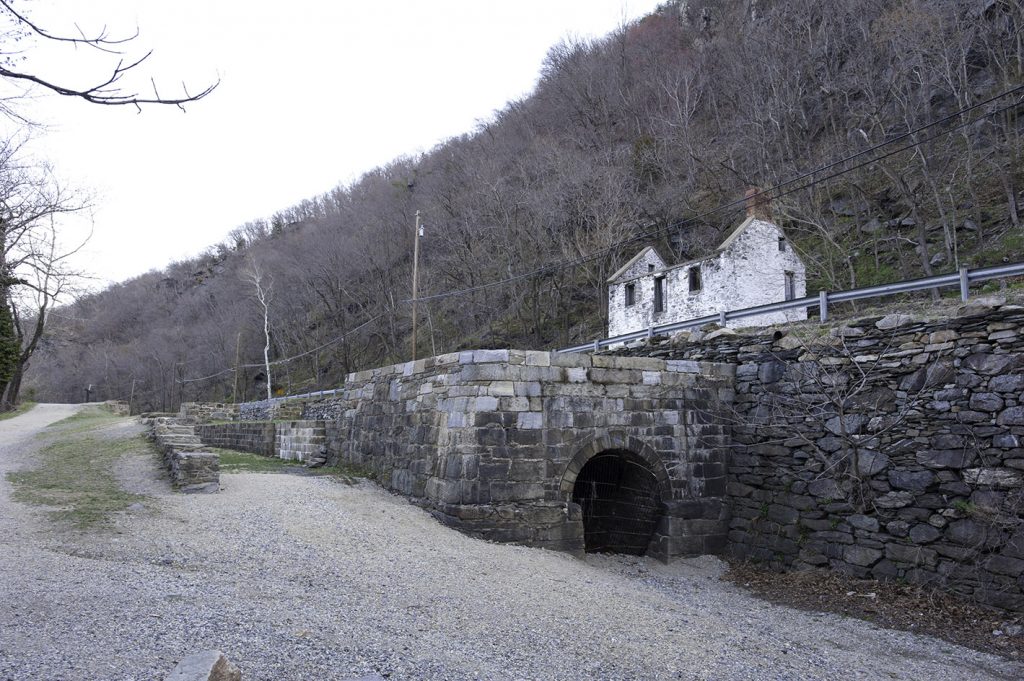
Lockhouse 21 “Swains”: Canal Quarters
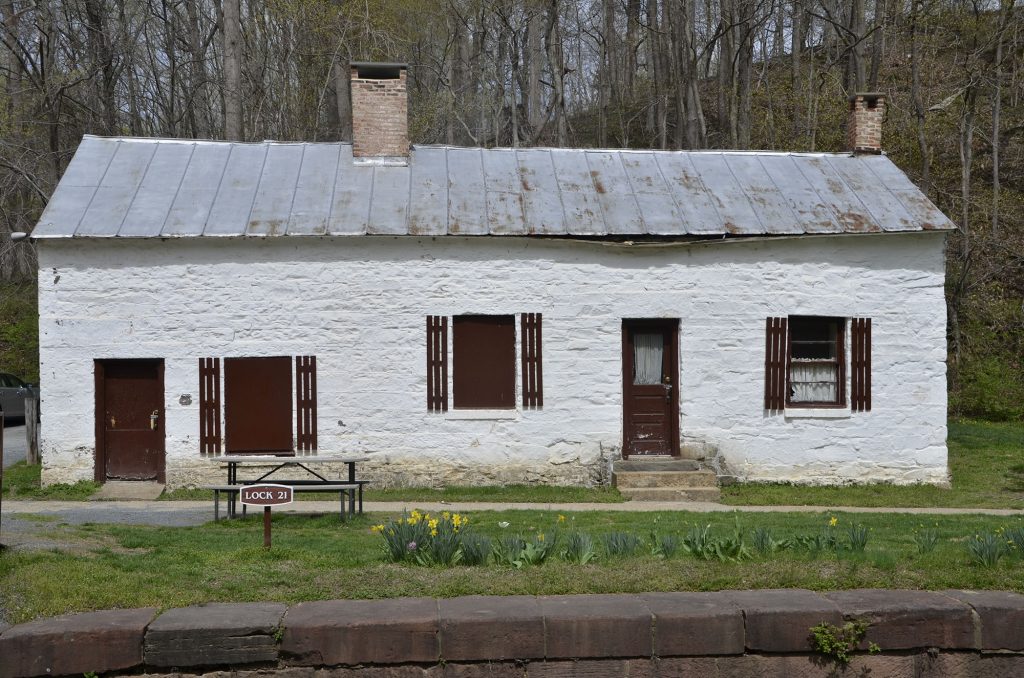
Swains Lockhouse (Lockhouse 21) is part of the Canal Quarters program and is available for overnight stays! You and up to 7 friends can spend up to three nights here, […]
Lockhouse 7
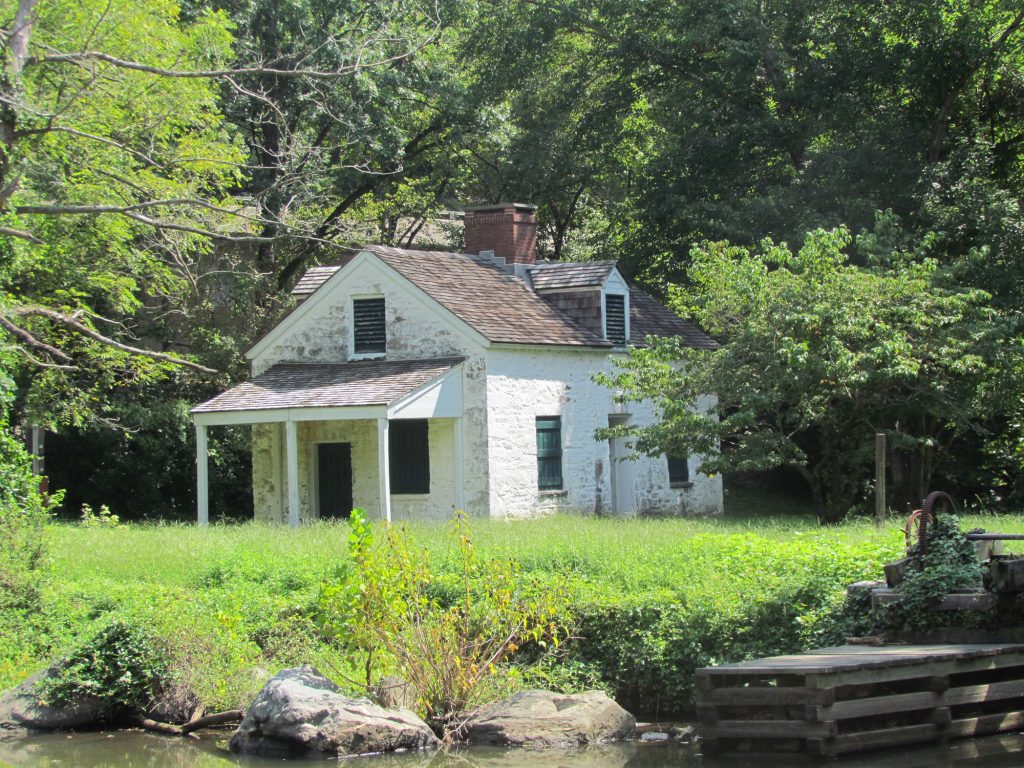
Lockhouse 29 (Lander)
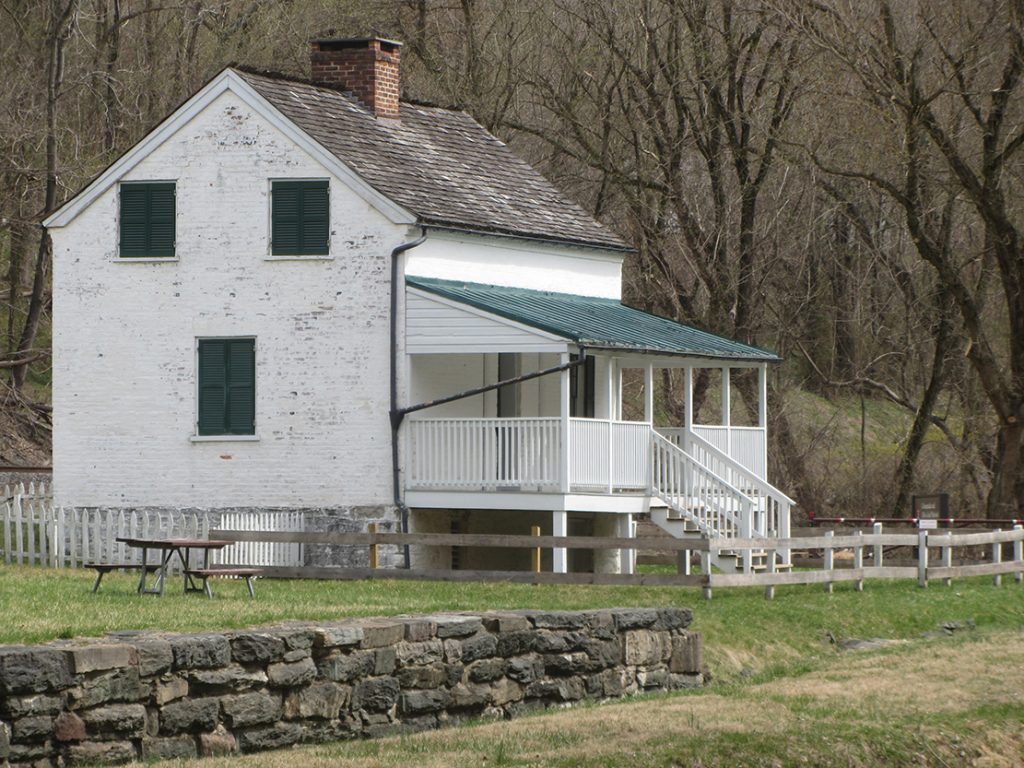
Historic Great Falls Tavern
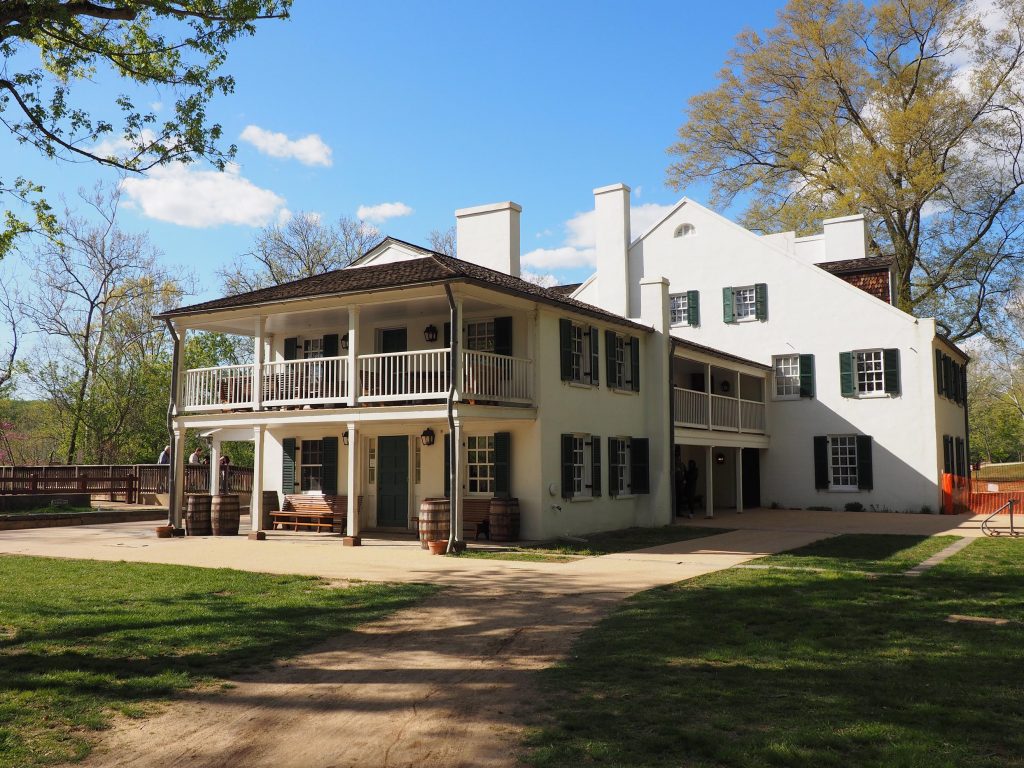
The Great Falls Tavern serves as a C&O Canal National Historical Park Visitor Center. Visit the Park’s website for more information. Great Falls is one of the most popular spots […]
The Gordon-Roberts House
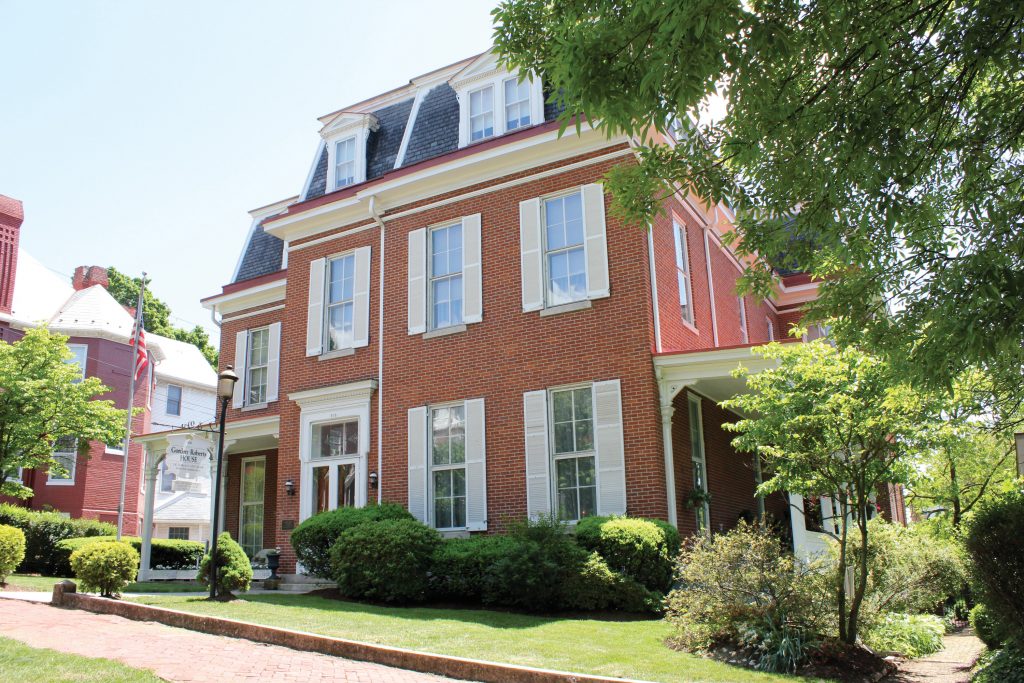
The Gordon-Roberts House was built in 1867 by Josiah Hance Gordon, a prominent attorney in Cumberland.The Second Empire style home is operated as a house museum and is opened to […]
George Washington’s Headquarters
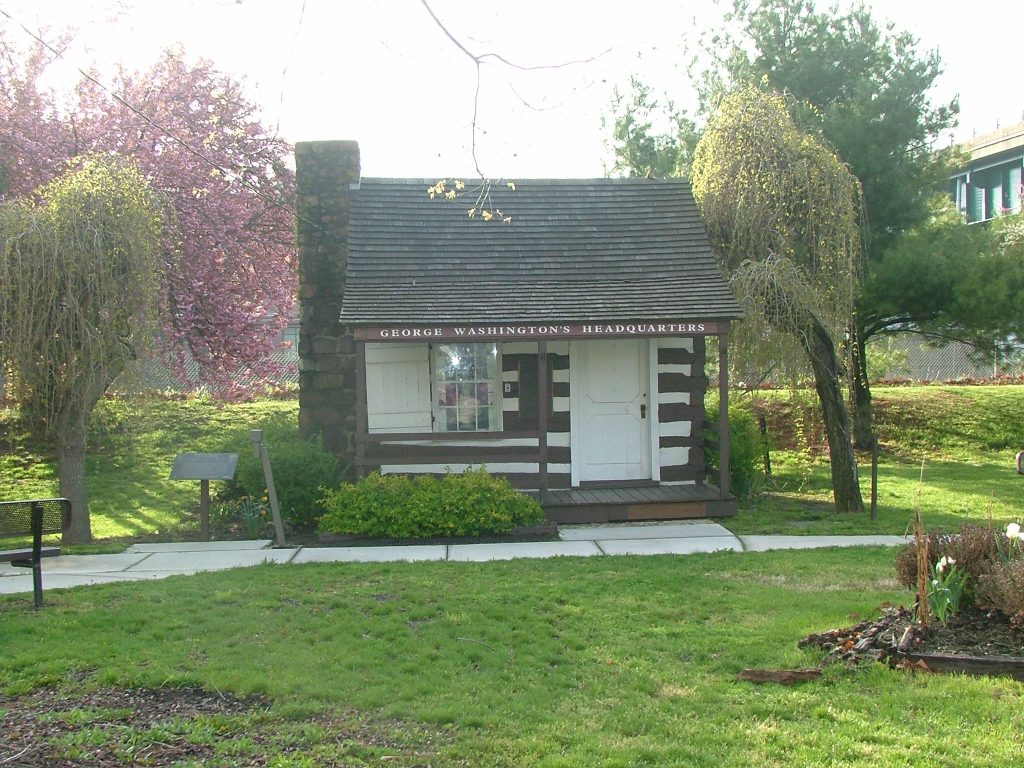
Historic log cabin in Cumberland, Maryland, which served as Washington’s headquarters during the French and Indian War and briefly during the Whiskey Rebellion
Evitts Creek Aqueduct
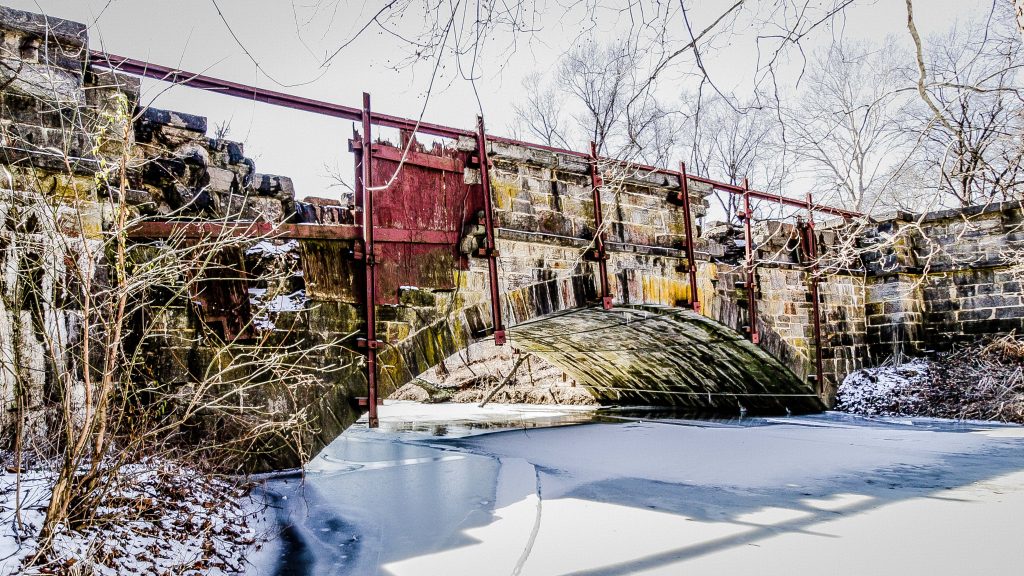
The Evitts Creek Aqueduct is the last of the 11 aqueducts on the Canal, and is made of “Fossilferous Tonoloway Limestone” quarried upstream and shipped to the aqueduct via a […]
Lock 75
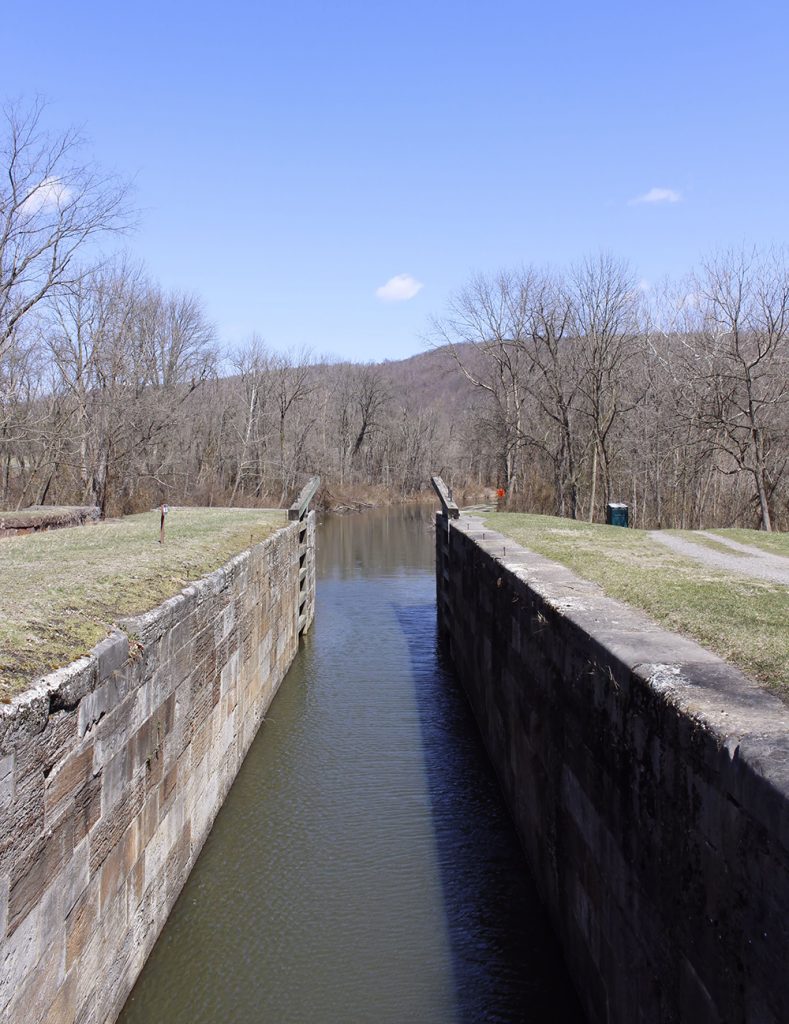
Lock 75 is the last lift lock on the C&O Canal. This lock has a lift of 10′ and has a total lift of 609.193′ above the Georgetown tide lock.
Lock 74
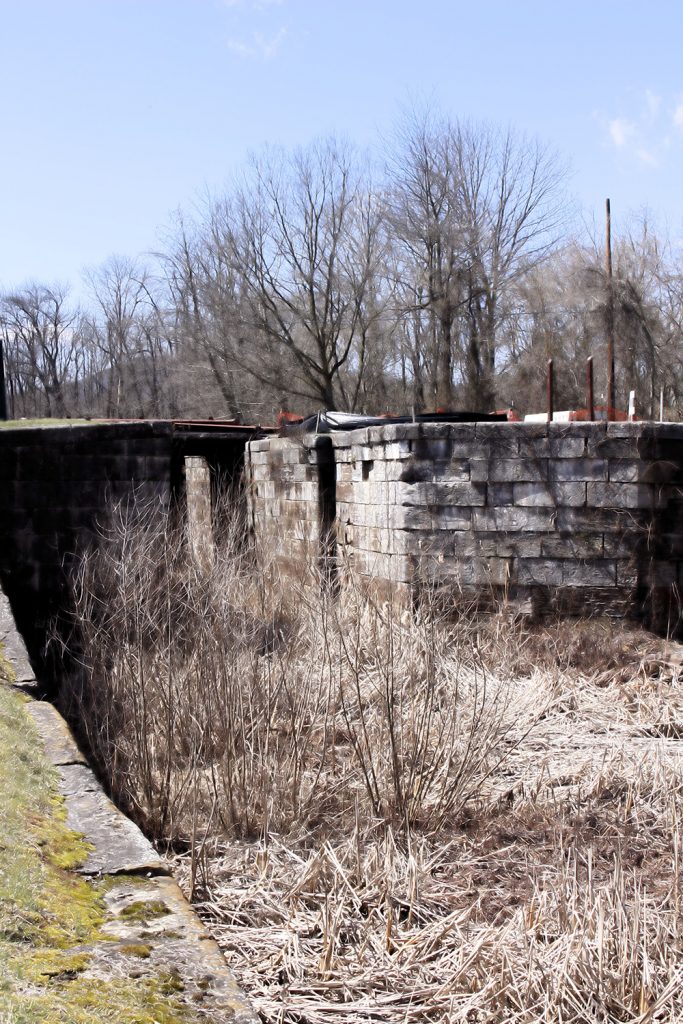
Lock 74 was completed in 1841 and later rebuilt in 1869. This is one of the few locks along the canal that has a 10′ lift as opposed to the […]
Lock 73
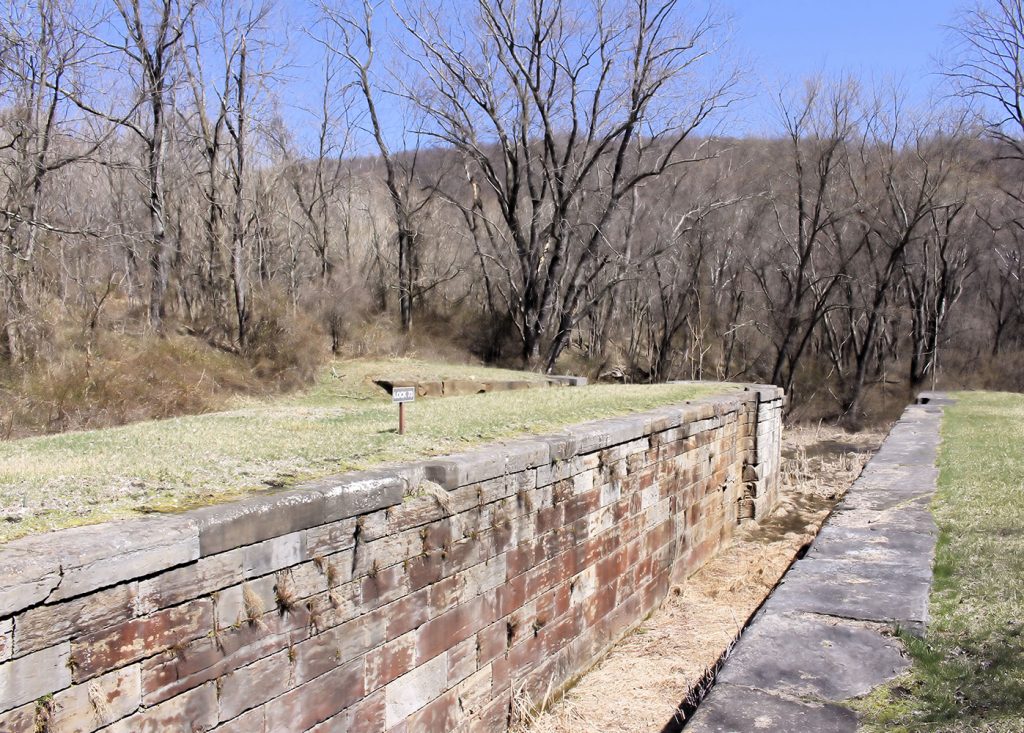
Lock 73 sat in an area referred to as “The Narrows” during canal days. “The Narrows” is an area along the canal where the canal, highway, and railroad are squeezed […]
Lock 72
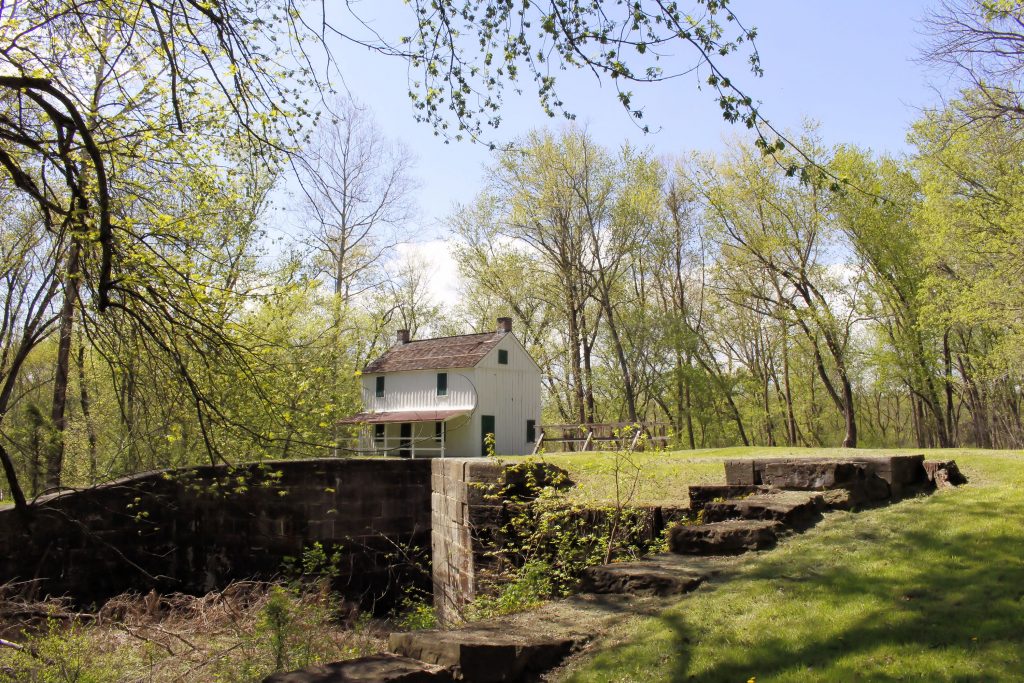
Lock 72 was finished in 1841 and it was constructed of stone from the nearby quarry as opposed to the 13 composite locks before it. In the days that the […]
Lockhouse 70
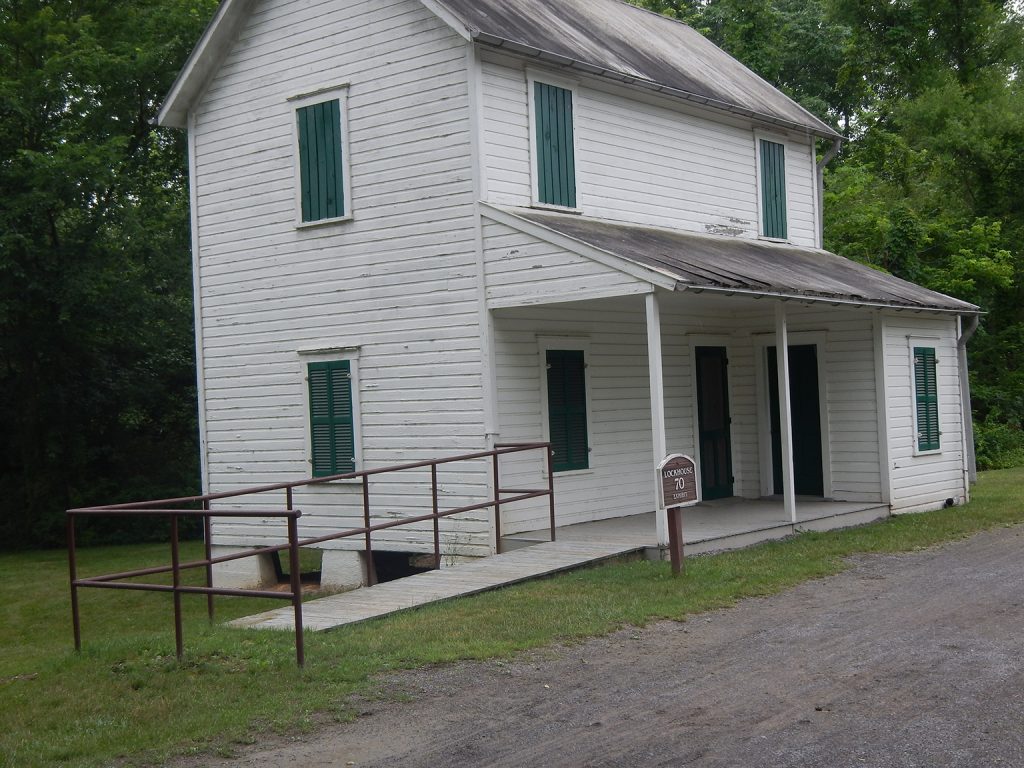
Lock 71
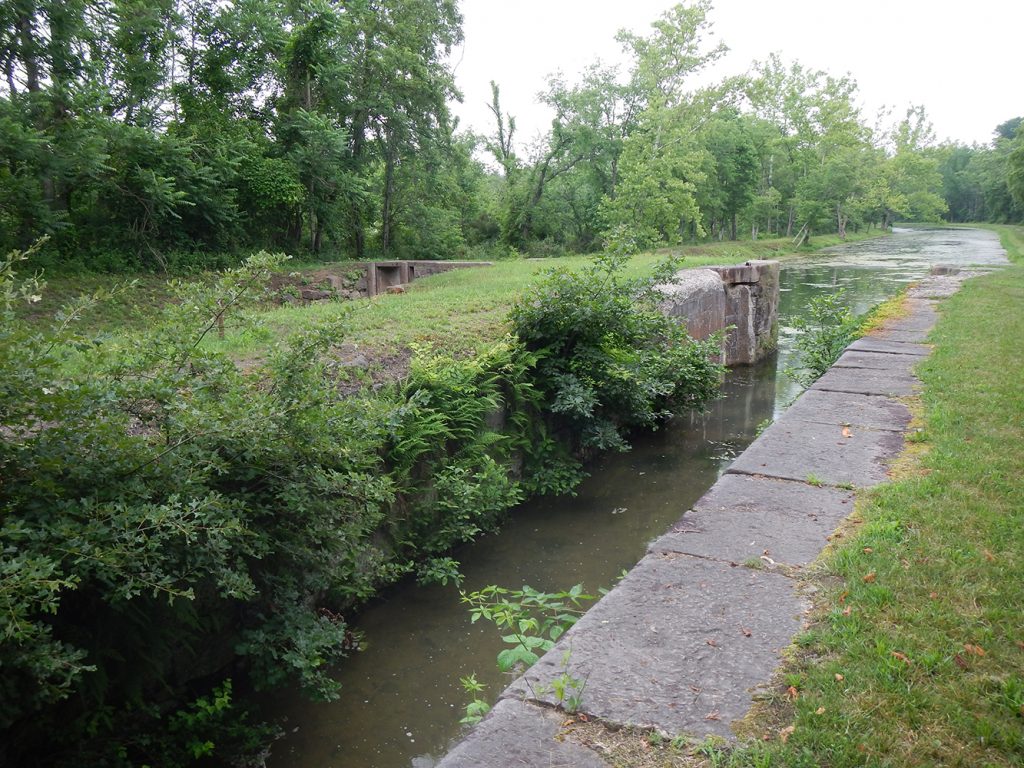
Lock 71 is in better condition than most locks along the Canal considering it is the last of the composite locks. It was built mainly of stone but the lock […]
Lock 70
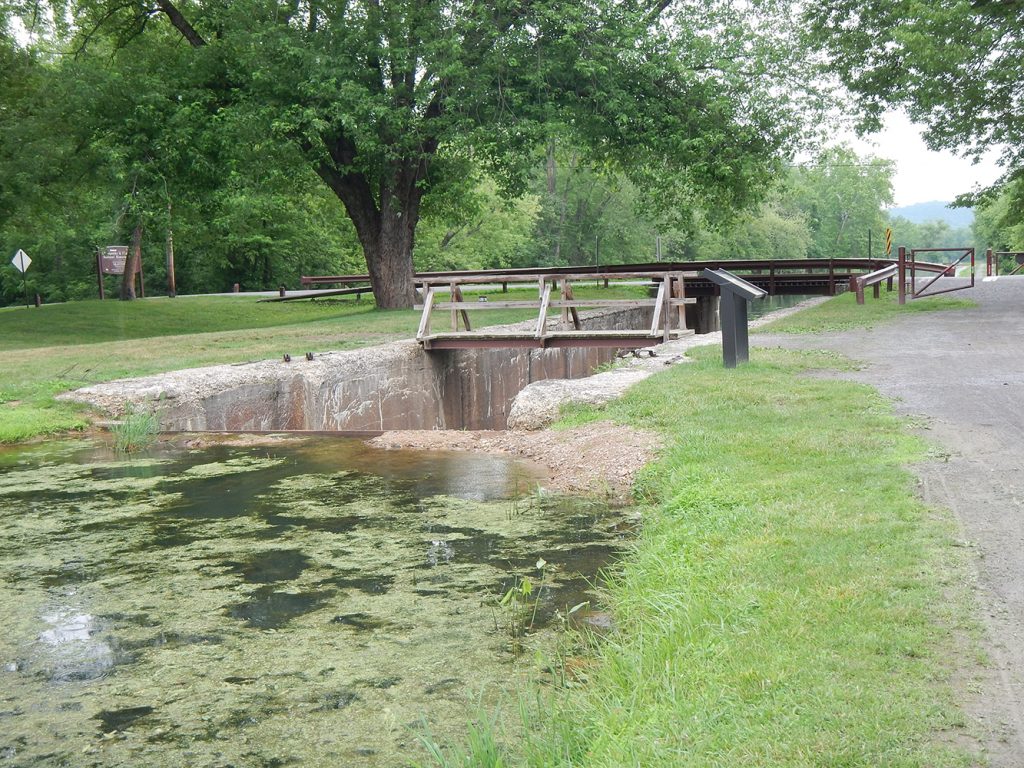
Lock 70 is in good condition, re-built after a fire in 1906 that destroyed a bridge over the Canal. Lockhouse 70 stands nearby, a two-story white frame lockhouse in the […]
Lock 69
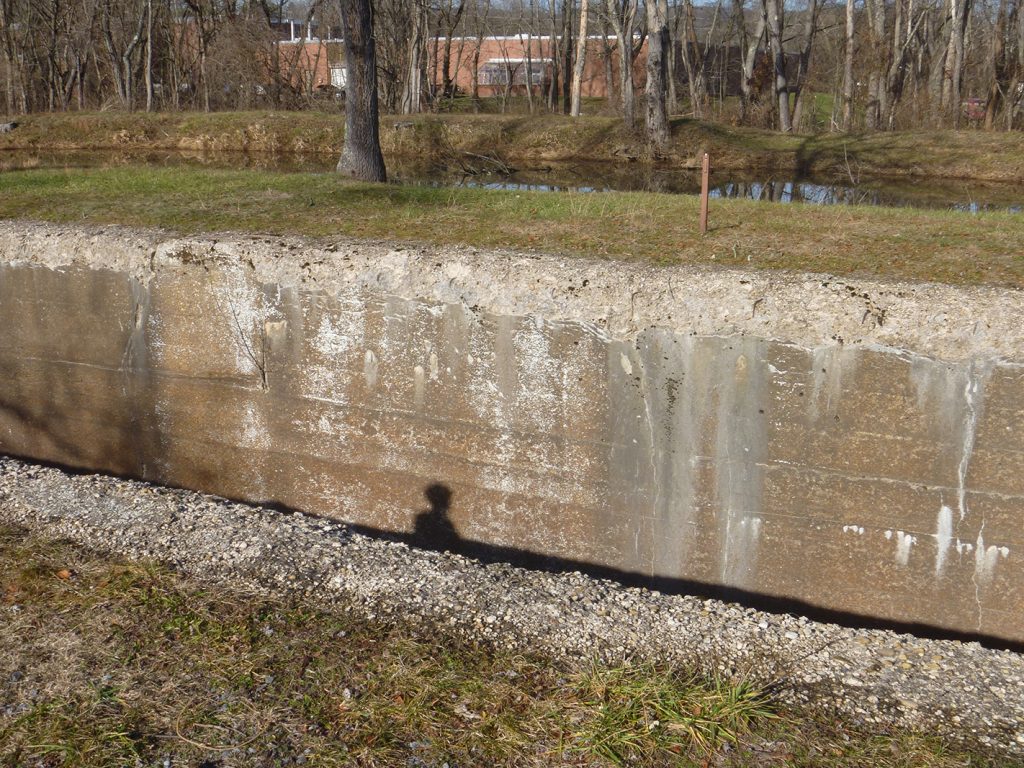
Three locks exist in a half-mile stretch in Oldtown. Locks 69-71 are the last three composite locks on the Canal. Lock 69, also known as “Twigg’s Lock” is the first. The […]
Lock 68
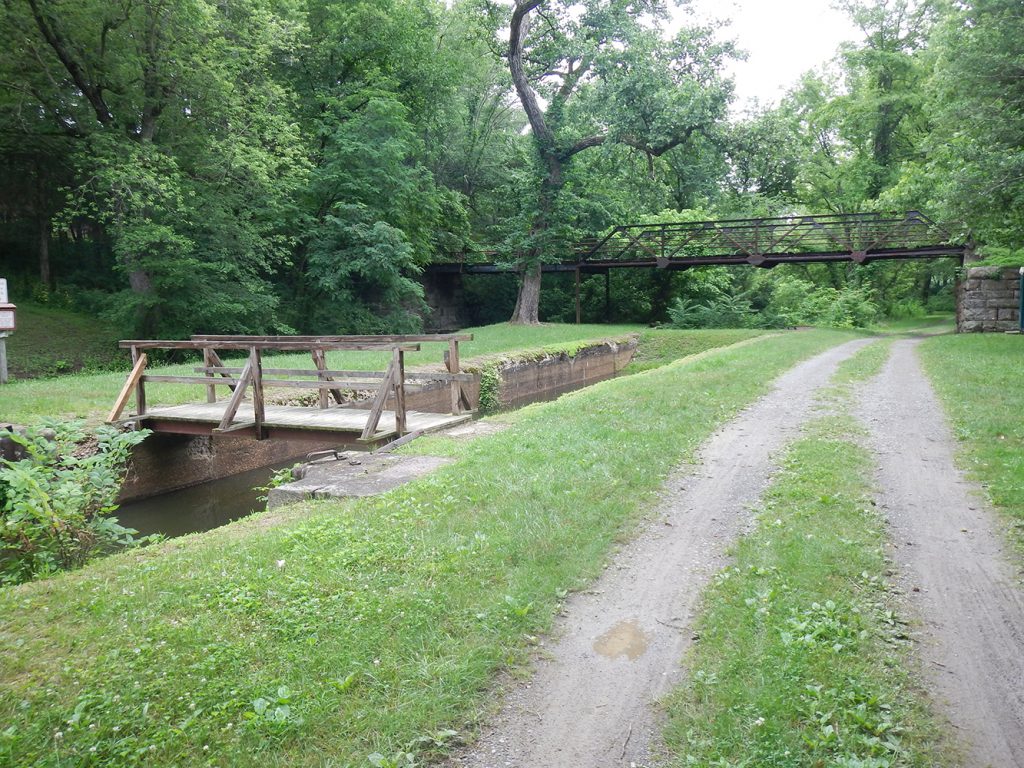
Lock 68 is just above the path down to Potomac Forks, the point in the river where the North and South branches of the Potomac join for the journey to […]
Town Creek Aqueduct
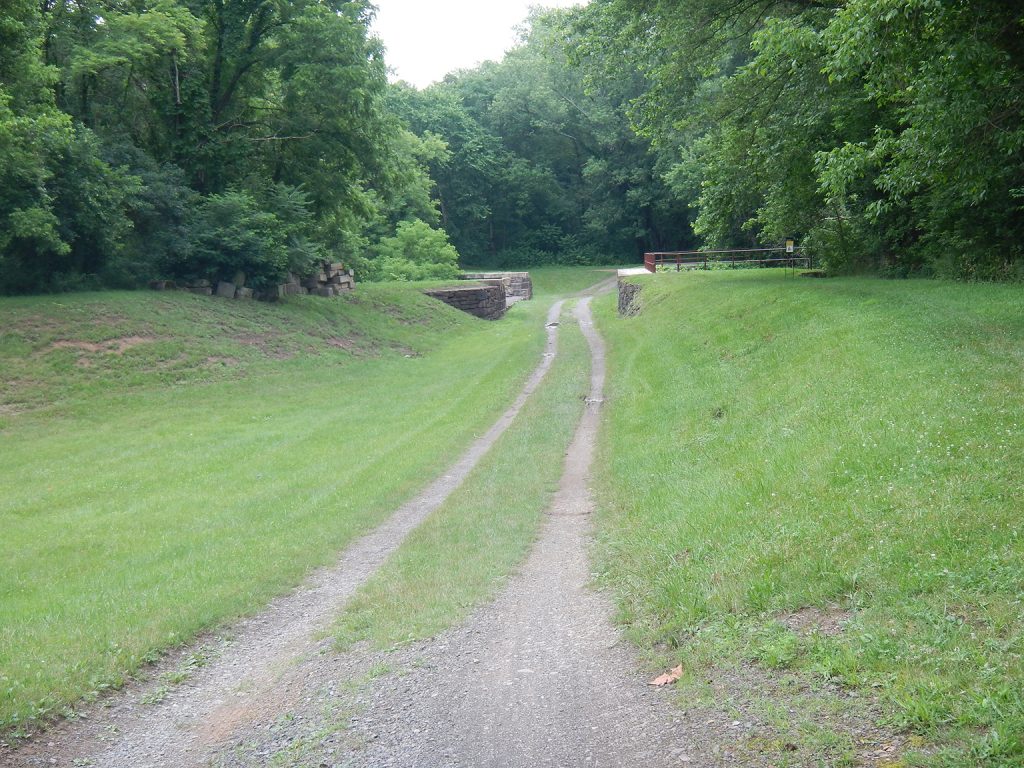
Town Creek Aqueduct is a single-span aqueduct. Construction began in 1837 and was abandoned in 1838 when the contractor quit during the Canal company’s financial crisis. It was completed during […]
Lock 67
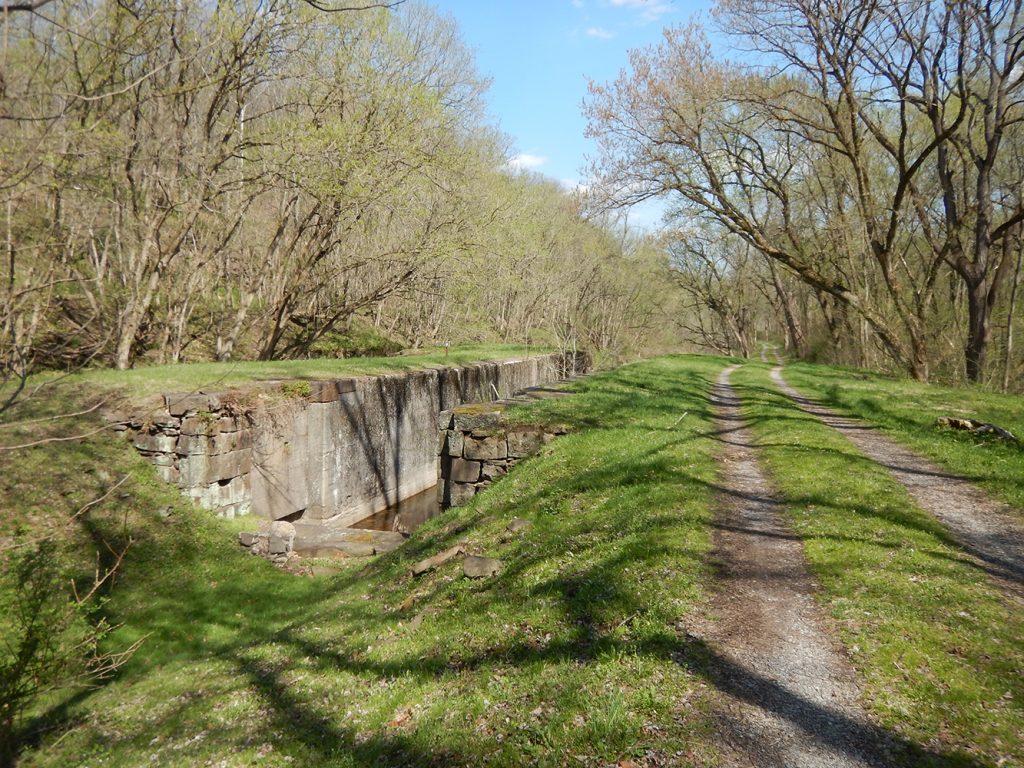
For the past 17 miles, the C&O Canal and the Potomac River has acted as the southern boundary of the sprawling Green Ridge State Forest, Maryland’s second largest forest preserve. […]
Lock 65: The Missing Lock
Have you heard of the “missing lock?” The truth about the missing lock is that it was never truly missing in the first place. The truth is it was never […]
Lock 66
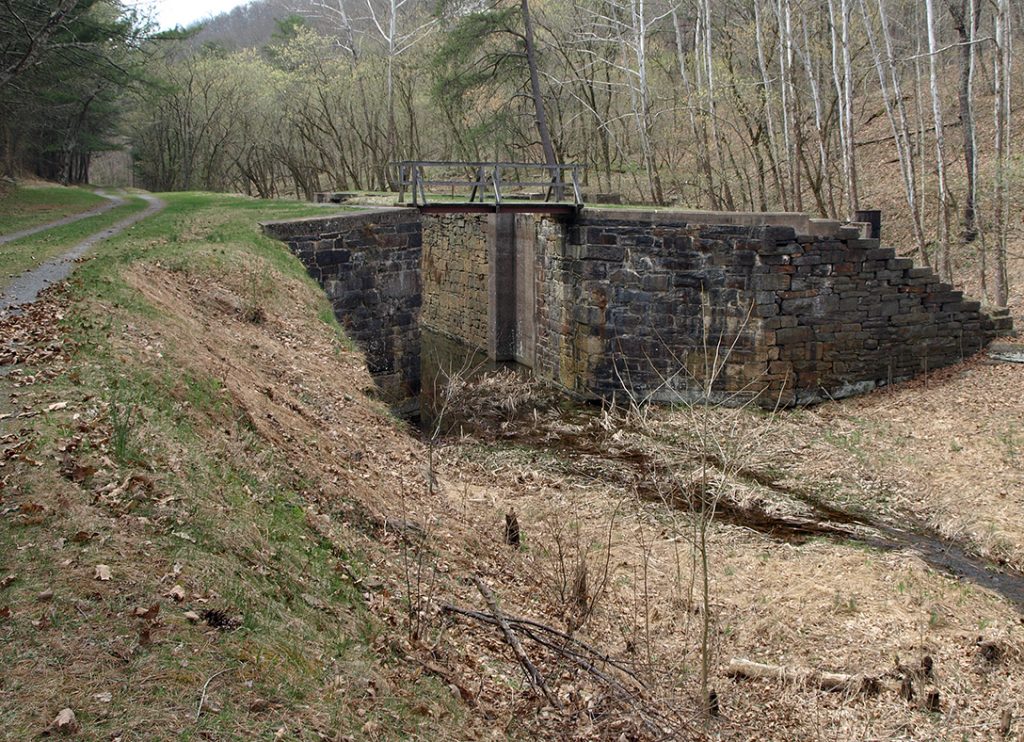
This is the last of three closely spaced composite locks (beginning with Lock 63) that lift the Canal in its approach to the Paw Paw Tunnel. Plans were to build […]
Lock 64 2/3
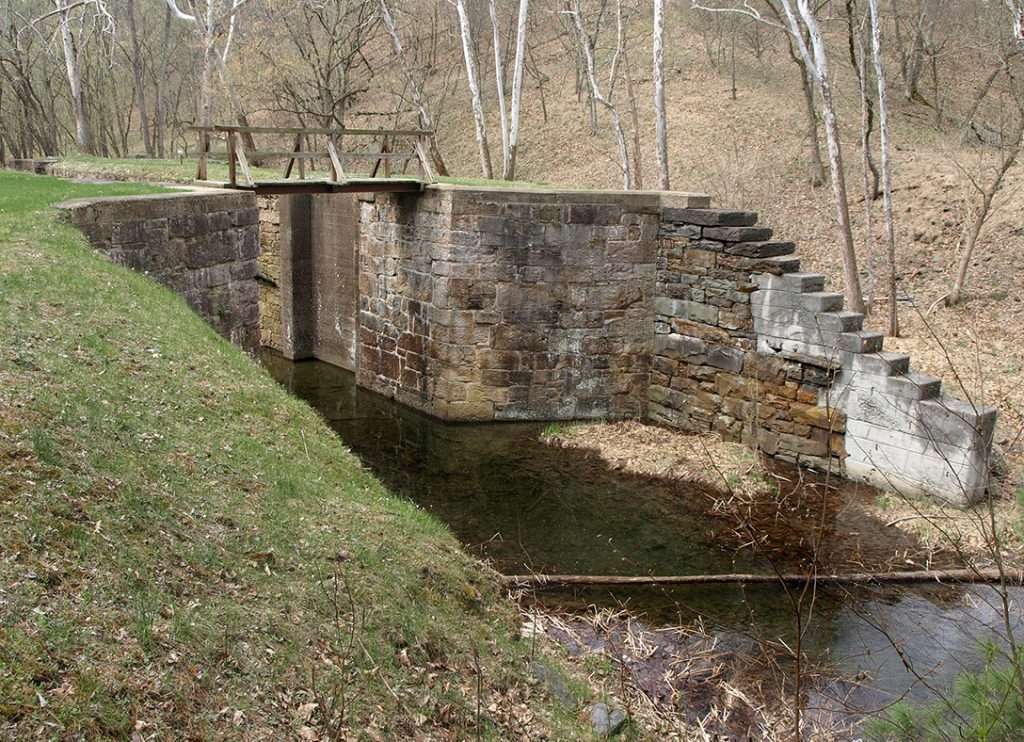
Lock 63 1/3
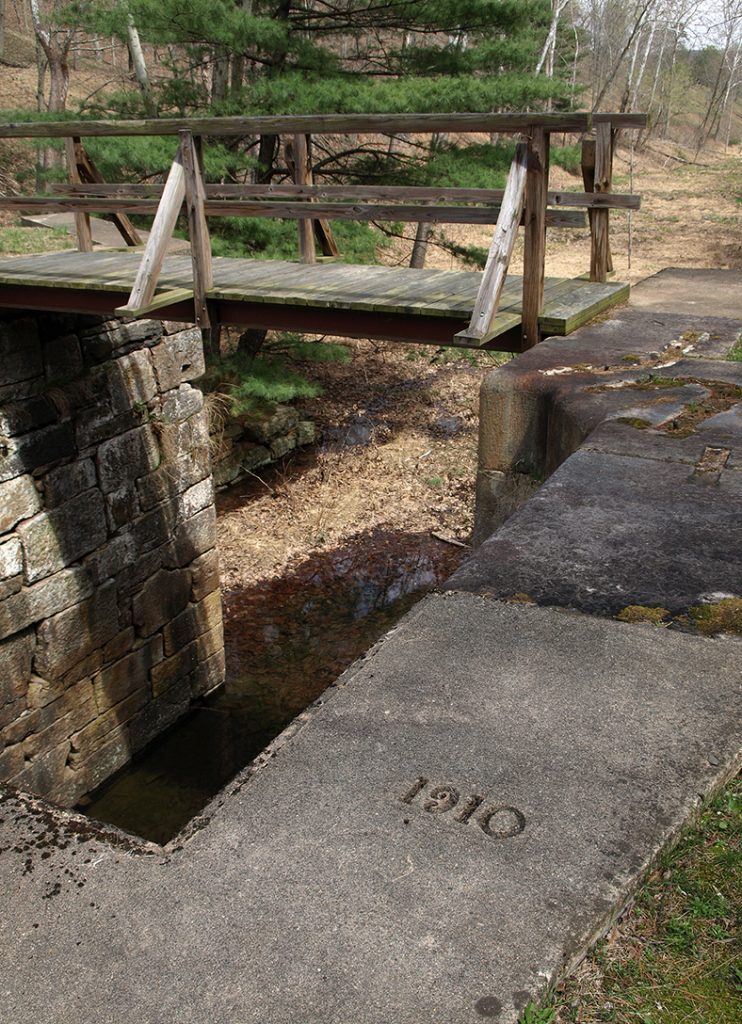
Lock 62
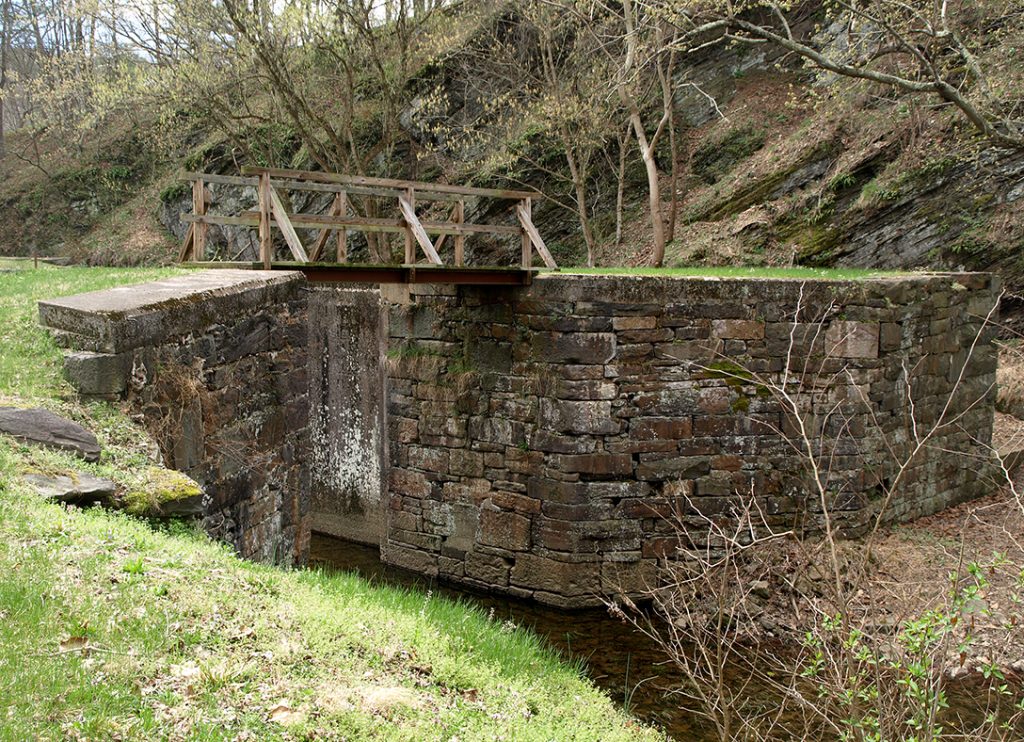
Like several locks in this section of the Canal, concrete replaces several sections. The remains of the lockhouse are also nearby. The free overnight campsite provides a portable toilet, picnic […]
Lock 61
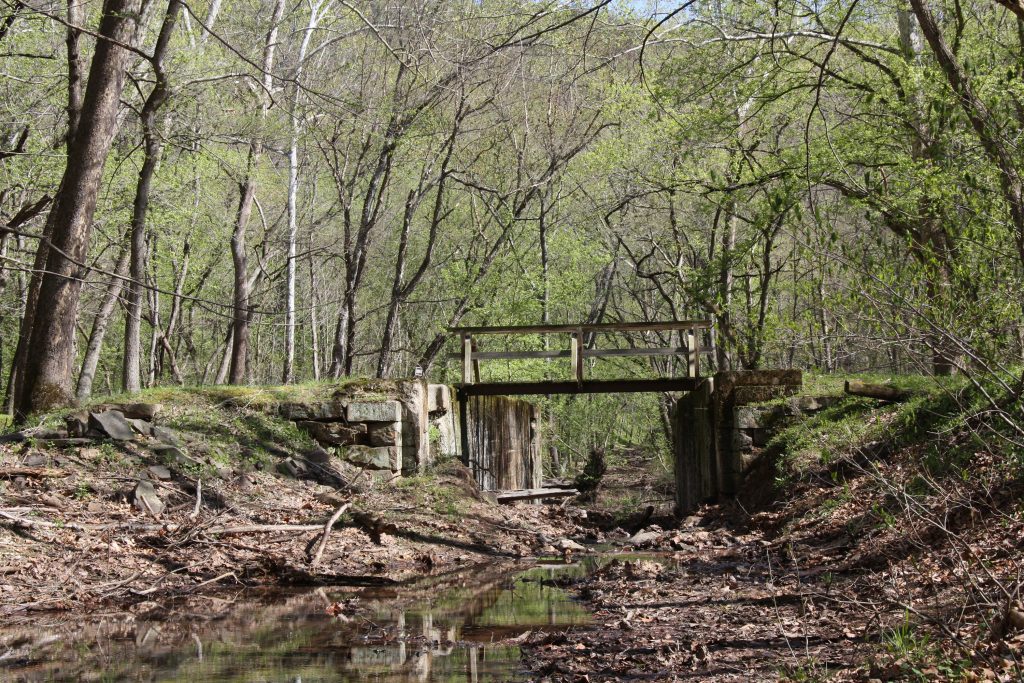
Concrete covers most of this lock, and it has been dammed up with stone on one end. The contractor quarried the composite stone from nearby Twigg Hollow and brought it […]
Lock 60
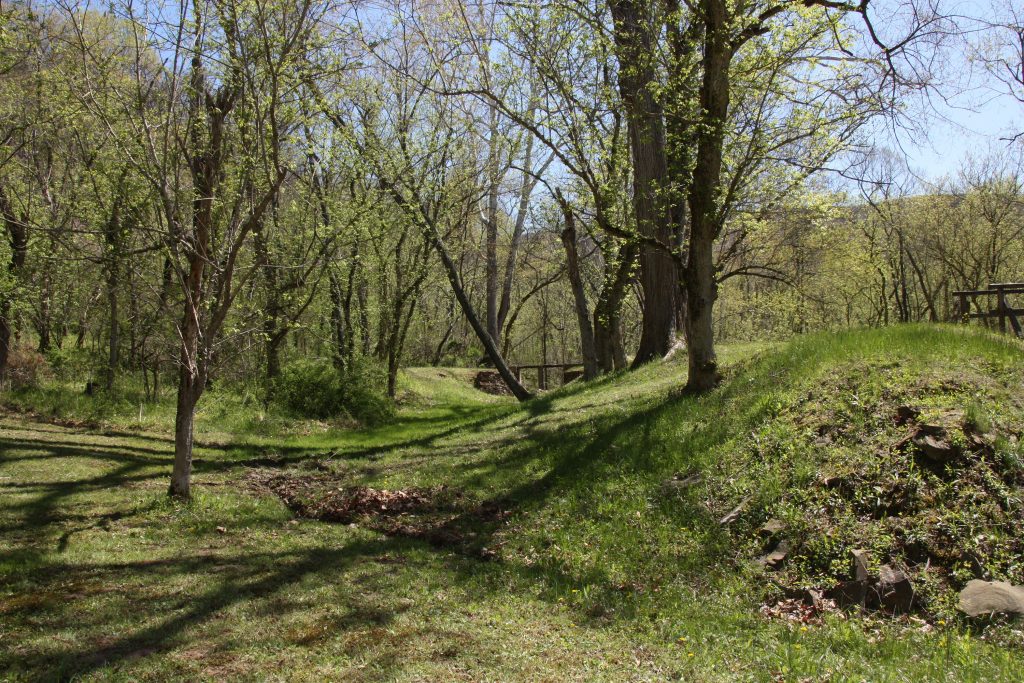
Lock 60 is one of the locks that was extended on the lower end in order to accommodate two boats. Today the concrete sides of this lock are covered with […]
Lock 59
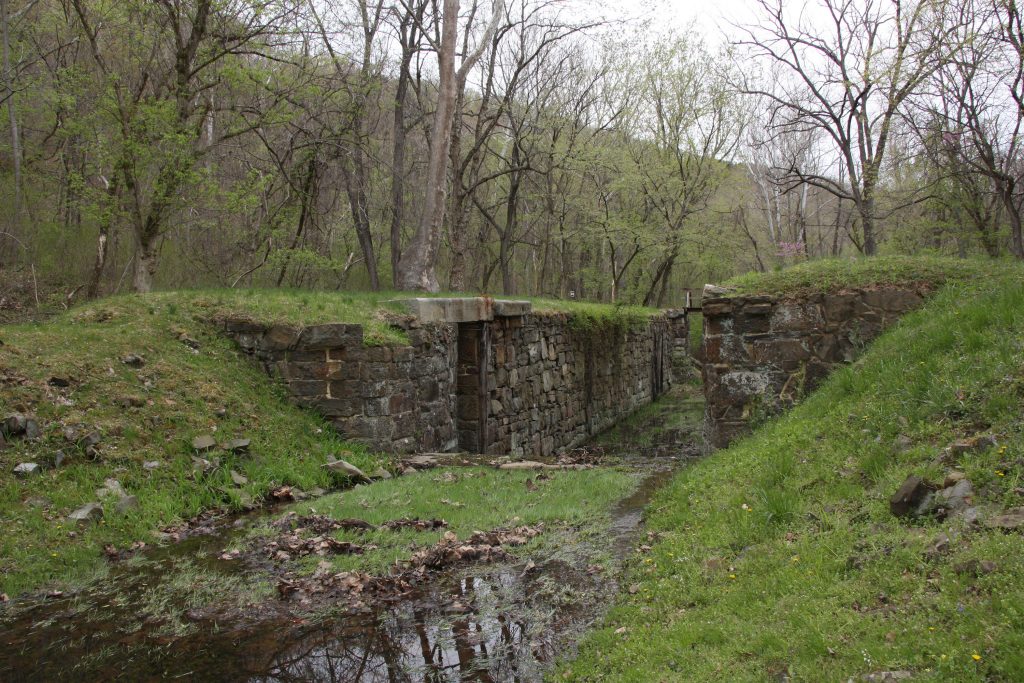
Lock 59 is another composite Lock, with some timbers still hanging on its walls. The stone foundations on the side of Lock 59 are the remains of the lockhouse that […]
Lock 58
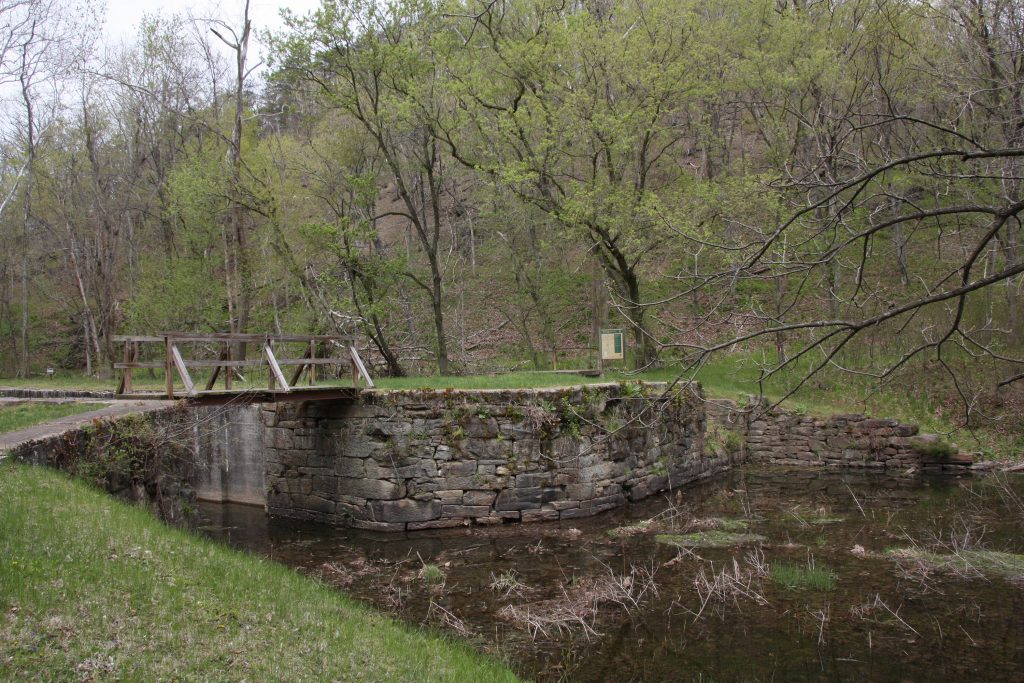
Lock 58 is located in a remote stretch of the canal and was the first of the 13 upper Locks that used a double layer of kyanized wood planks, however the […]
Fifteenmile Creek Aqueduct
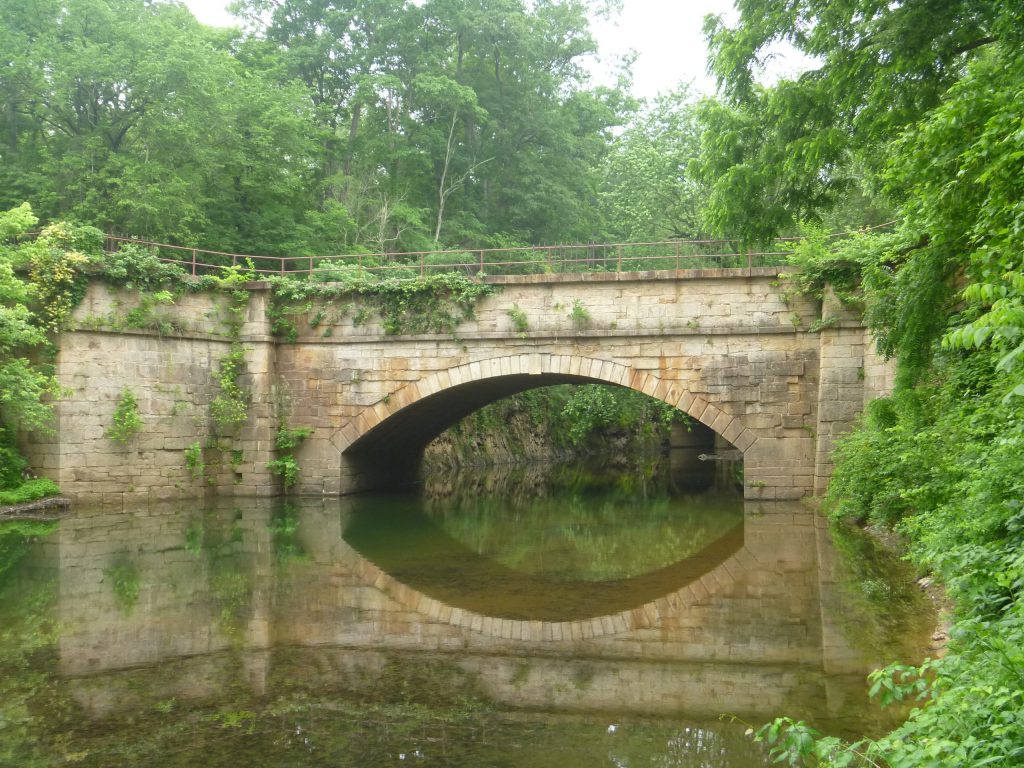
The Fifteen Mile Creek Aqueduct is a small, single-arch aqueduct. Built between 1838 and 1850, it is in excellent condition for a century and a half old structure. It was […]
Lock 57
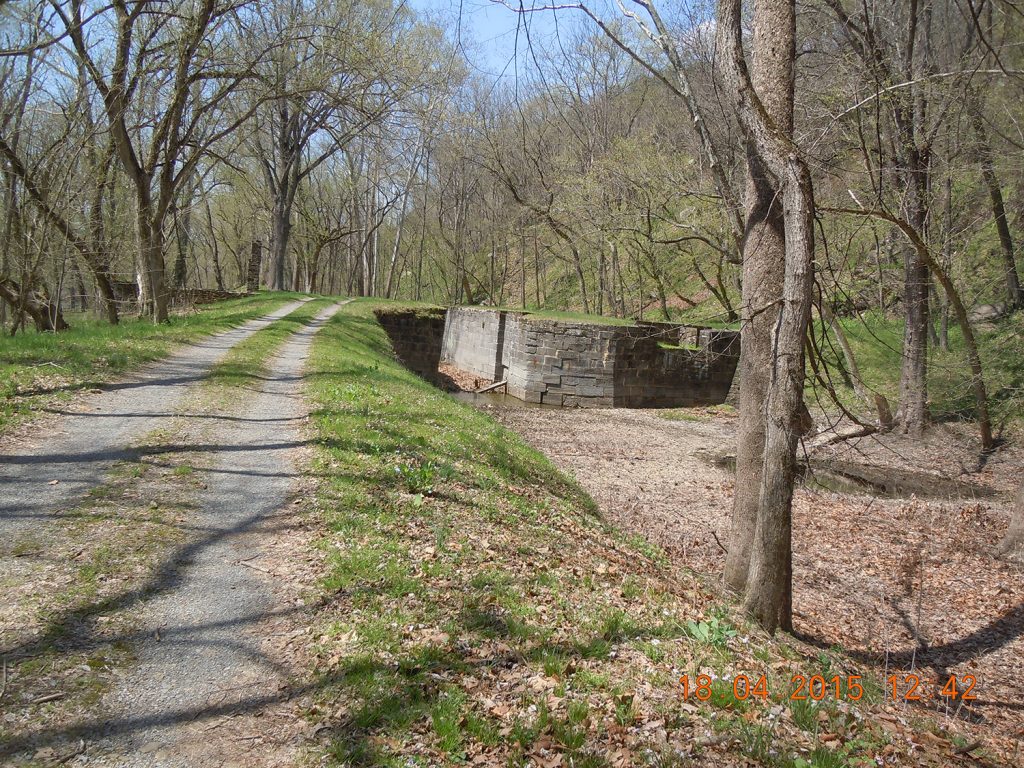
Limestone building blocks for Lock 57 arrived from two different sources: the quarry at the mouth of the Cacapon and the Little Tonoloway quarry in Hancock. Perched above the towpath […]
Sideling Hill Creek Aqueduct
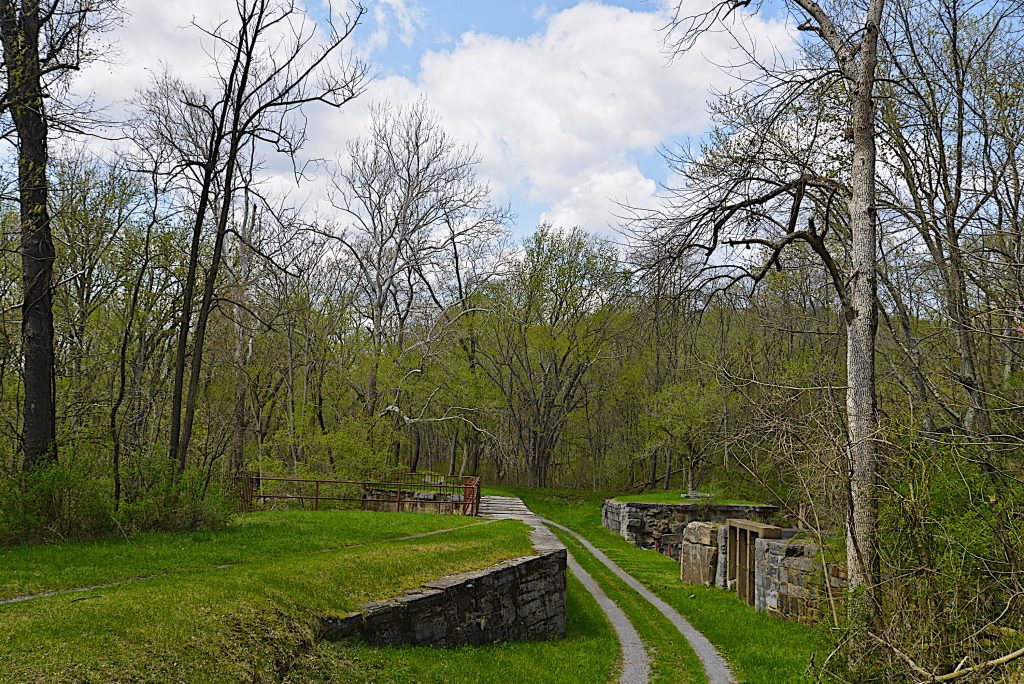
The Sideling Hill Creek Aqueduct was built between 1837 and 1840 primarily using Tonoloway Limestone from the quarry at the mouth of the Cacapon River, as well as Pocono sandstone […]
Lock 56
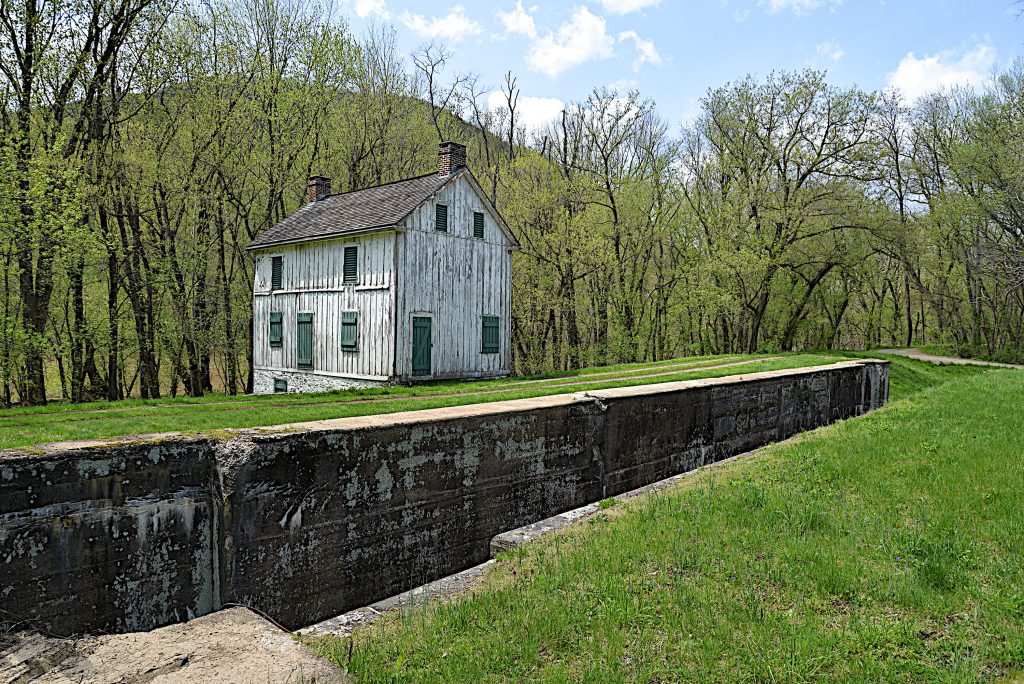
Very few traces remain of a bustling little community of Pearre that sprang up around Lock 56. In addition to the two-story lockhouse, homes and a small hotel that existed […]
Dam 6/Guard Lock 6/Lock 55
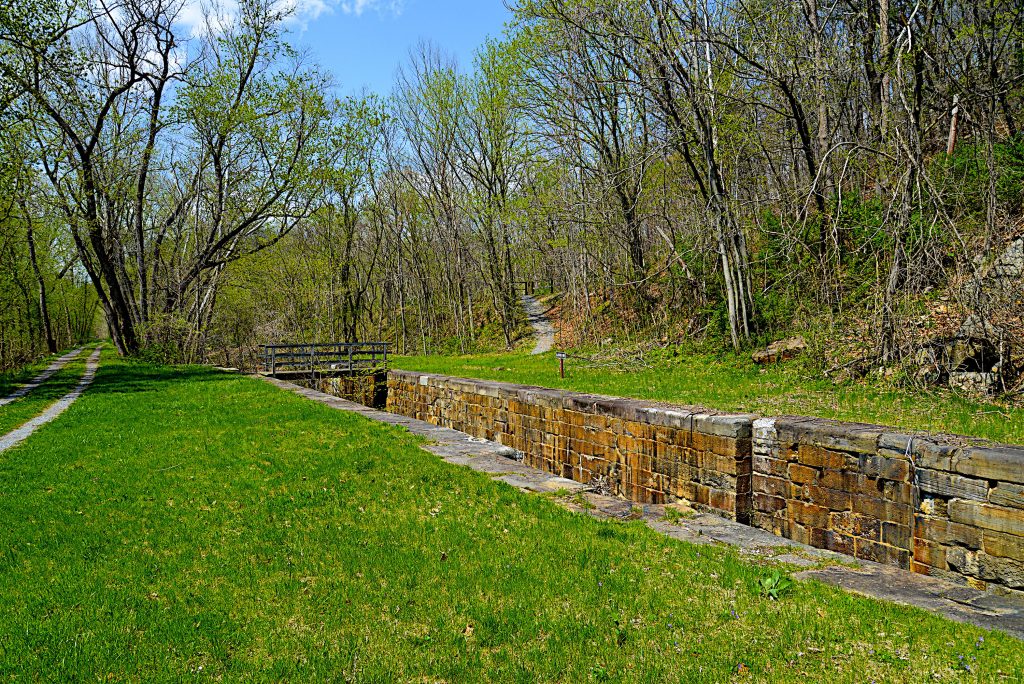
Fifty miles shy of Cumberland, Dam No. 6 marked the terminus of the Canal until the final section was completed in 1850. Guard Lock No. 6 has been filled with […]
Lock 54
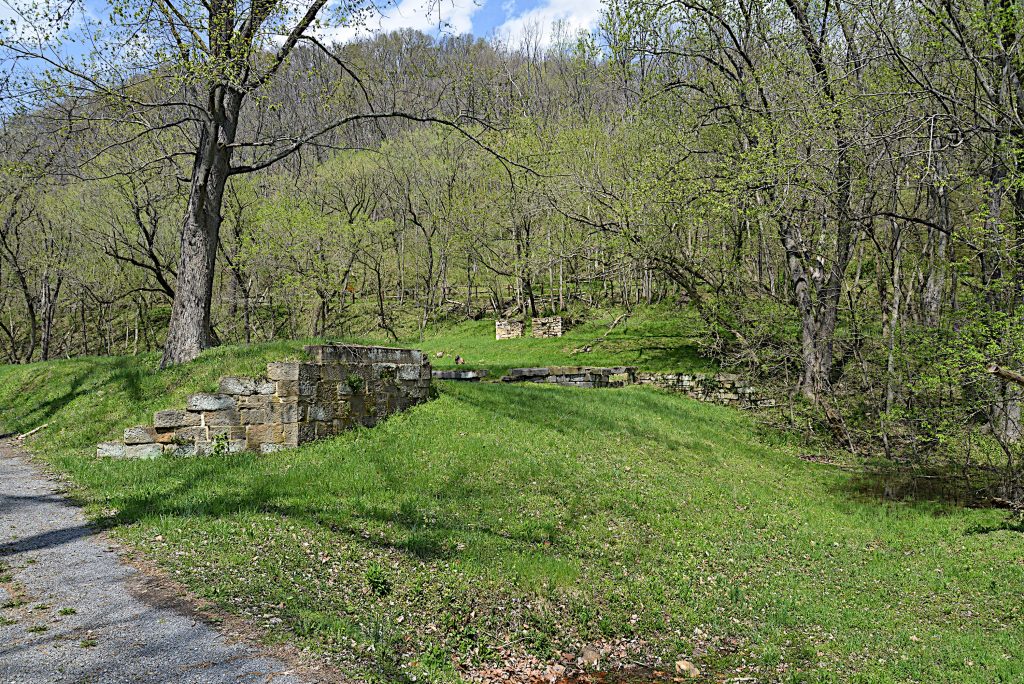
The Potomac River parallels the east side of Tonoloway Ridge before slicing through it in the vicinity of Lock 54. Here, you’ll find only the tops of the lock walls, […]
Lock 53

A tenth of a mile upstream from Leopards Mill Campsite is the remains of Lock 53, made of limestone. The lockhouse is gone, but the foundation remains across the lock.
